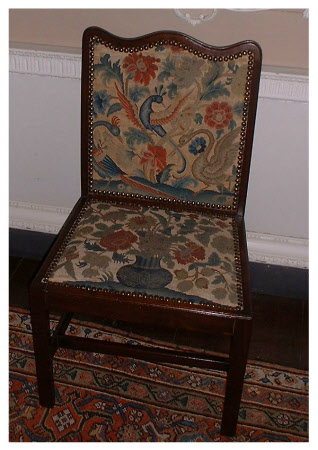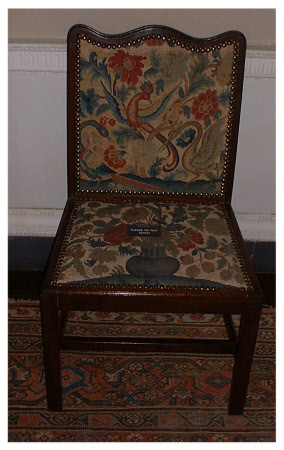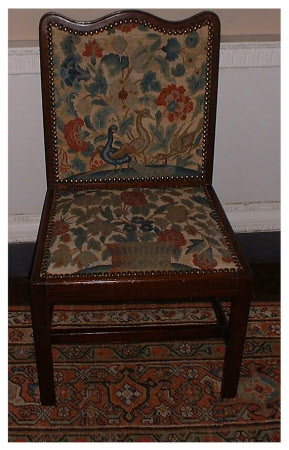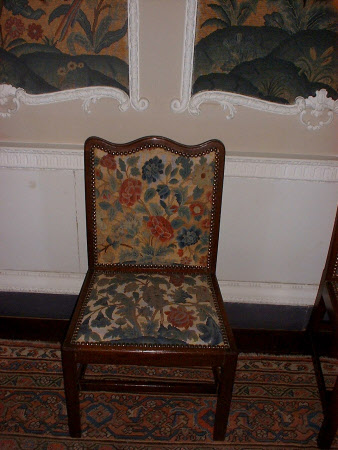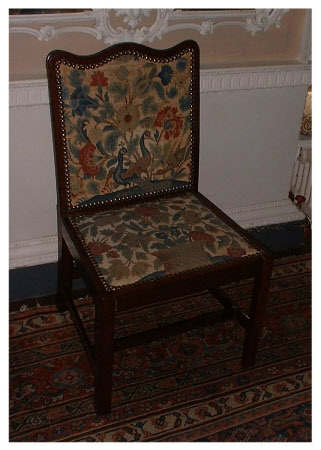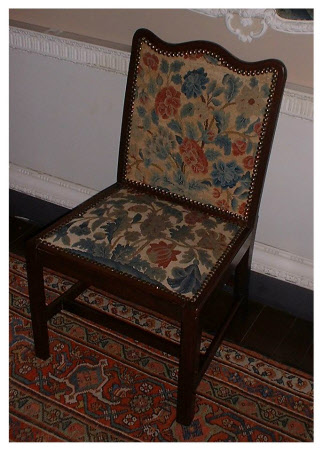Chair
possibly Julia Blackett, Lady Calverley (1686 - 1736)
Category
Furniture
Date
circa 1730 (the needlework) - circa 1755 (the chairs)
Materials
Mahogany, wool, canvas, brass
Place of origin
Esholt Hall
Order this imageCollection
Wallington, Northumberland
NT 582795
Summary
A set of six mahogany and needlework chairs, English, the chairs circa 1755, the needlework circa 1730. Each having an undulating toprail above a back and seat covered in gros and petit point wool work fixed with brass studs. The panel to the back worked with meandering foliage and large flowerheads; the panel to the seat with a spray of flowers issuing from a mound. All raised on square-section legs joined by an 'H'-shaped stretcher, the mahogany frame chamfered throughout. Some chairs stitched with exotic birds to the back panels, some with vases or urns holding flowers to the seats.
Full description
The needlework is possibly by Julia, Lady Calverley (1686 - 1736) nee Blackett, wife of Sir Walter Calverley, 1st Baronet of Esholt Hall, and mother of Walter Calverley Blackett (1707 - 1777), who inherited Wallington in 1728. A rare and very fine screen still at Wallington [NT 582790], dated 1727, displays her work. Its six petit point panels are worked with subjects based on engravings by Wenceslaus Holler's engravings for the 1663 edition of Virgil's Eclogues and Georgics. There are also a set of ten wool and silkwork panels, framed in the Needlework Room, one dated 1717, which were made by Lady Calverley for the drawing room at Esholt Hall, Yorkshire and brought to Wallington in 1755 when Esholt was sold. This date could also be a likely date for the commissioning of this set of chairs.
Provenance
Given with the property to The National Trust in 1941 by Sir Charles Philips Trevelyan, 3rd Bt. (1870 – 1958).
Makers and roles
possibly Julia Blackett, Lady Calverley (1686 - 1736), needlewoman
